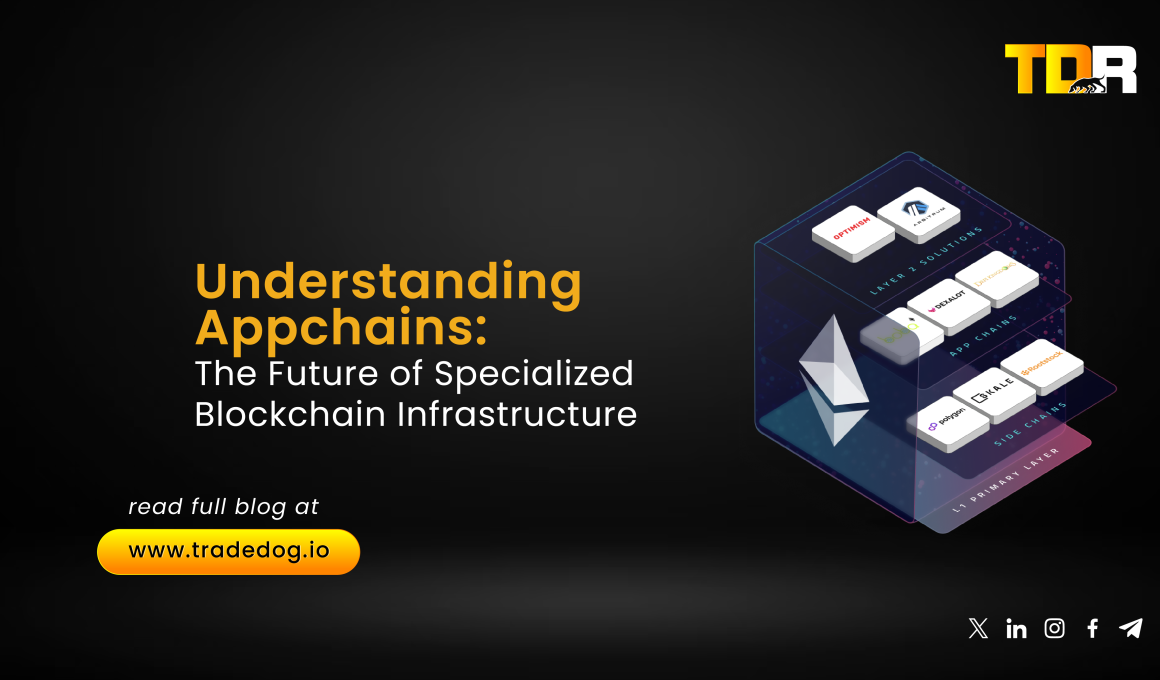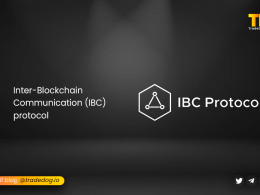Appchains essentially refers to application-specific blockchains. We can envision them as special chains designed to meet a specific purpose. This makes them more efficient compared to the general-purpose Layer 1 and Layer 2 chains (like Ethereum, Optimism, and others).
Let’s get away from technical jargon for a moment and try to understand the basic underlying concept. We all have come across the concept of Economies of Scale during our school days. It simply means that any economic system can become more efficient by bringing in specialization in efforts. This specialization of labor, coupled with integrated technology, decreases per-unit costs, ultimately increasing production.
A more vivid example of economies of scale from our everyday lives could be different departments like HR, Admin, Marketing, and others, working together within a larger organization to achieve success. Note that these departments work independently on different business aspects and contribute to achieving the bigger vision.
Now, contrast this with a startup where the teammates need to wear multiple hats and execute things. This makes them handle different business operations, keeping specialization on the backburner. Agreed?
In this analogy, the different departments within a large organization resemble Appchains (specialization in execution), while the startup is more like the general-purpose Layer 1 and Layer 2 chains.
Understanding Appchains
Vitalik, in his latest paper, sheds light on how they had to abandon many of their ambitious plans and simply keep the EVM. Their goal then was to build a blockchain infrastructure that works, and thus they didn’t focus much effort on building specialized tech. They traded off transaction speed but kept security uncompromised.
This is where Appchains place themselves as a solution – specialized chains fine-tuned to the specific performance, security, and governance needs of the application.
For Ethereum L1, a strong security guarantee is essential to ensure that the data can’t be manipulated. But social media and gaming do not require the same security model as L1. It’s okay if someone can pay a million dollars to revert a record of them losing a chess game or do anything similar. The requirements from the infrastructure aren’t the same here. We can compromise on security, but we need fast finality and high transaction speeds to suit this use case. This is where Appchains come into the picture.
Why Do We Need Appchains?
Appchains allow for the highest degree of flexibility at the infrastructure level. They provide us with the building blocks and allow us to build modular solutions, basically empowering developers with complete control over the blockchain’s mechanics—from tokenomics to consensus mechanisms. Developers are free to optimize it as per the dApp’s requirements.
Having its own set of governance rules allows Appchains to tweak the mechanics in a way that the system can be built for hyper scalability.
The Web3 ecosystem currently works in silos. What if Appchains are provided with standard SDKs to build their chains? We will be able to tackle the mammoth problem of interoperability. This premise makes Appchains a forward-looking solution as they, being independent, can still be interoperable and allow for secure and fast asset transfers from one dApp to another.
Examples
- Immutable zkEVM: This is an Appchain on Ethereum focusing entirely on enabling blockchain-based games. As Ethereum struggles with high transaction throughput, it’s not the best infrastructure for gaming-related applications. Immutable’s gaming-focused Appchain addresses these challenges and helps gaming studios deploy games in the Ethereum ecosystem seamlessly.
- Cosmos: Zones are independent blockchains that can be purpose-built for varied applications, from DeFi to gaming. These zones are similar to Appchains in their functionality, as they allow for a high degree of customization and autonomy. Cosmos uses a mechanism called the Inter-Blockchain Communication protocol (IBC), where ‘Zones’ can communicate with each other using HUB, its main chain, enabling the smooth transfer of data and tokens seamlessly across the Cosmos ecosystem.
Conclusion
Let’s move back two decades when tech systems were built as a full stack. Amazon came up to the scene and made microservices development an integral part of their software development practices. Amazon shifted from a monolithic architecture to a service-oriented architecture (SOA), which later evolved into the microservices architecture. By breaking down their application into smaller, autonomous services, Amazon was able to overcome the limitations of their monolithic system, leading to significant improvements in performance, reliability, and scalability. Similar is the case now with blockchains, and this is where Appchains allow for a microservices architecture.









